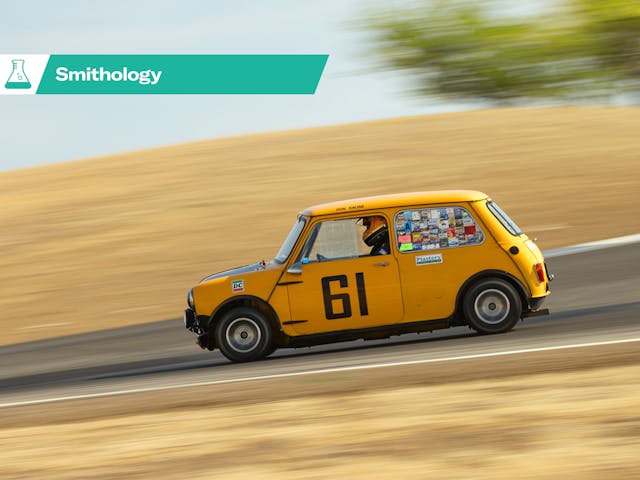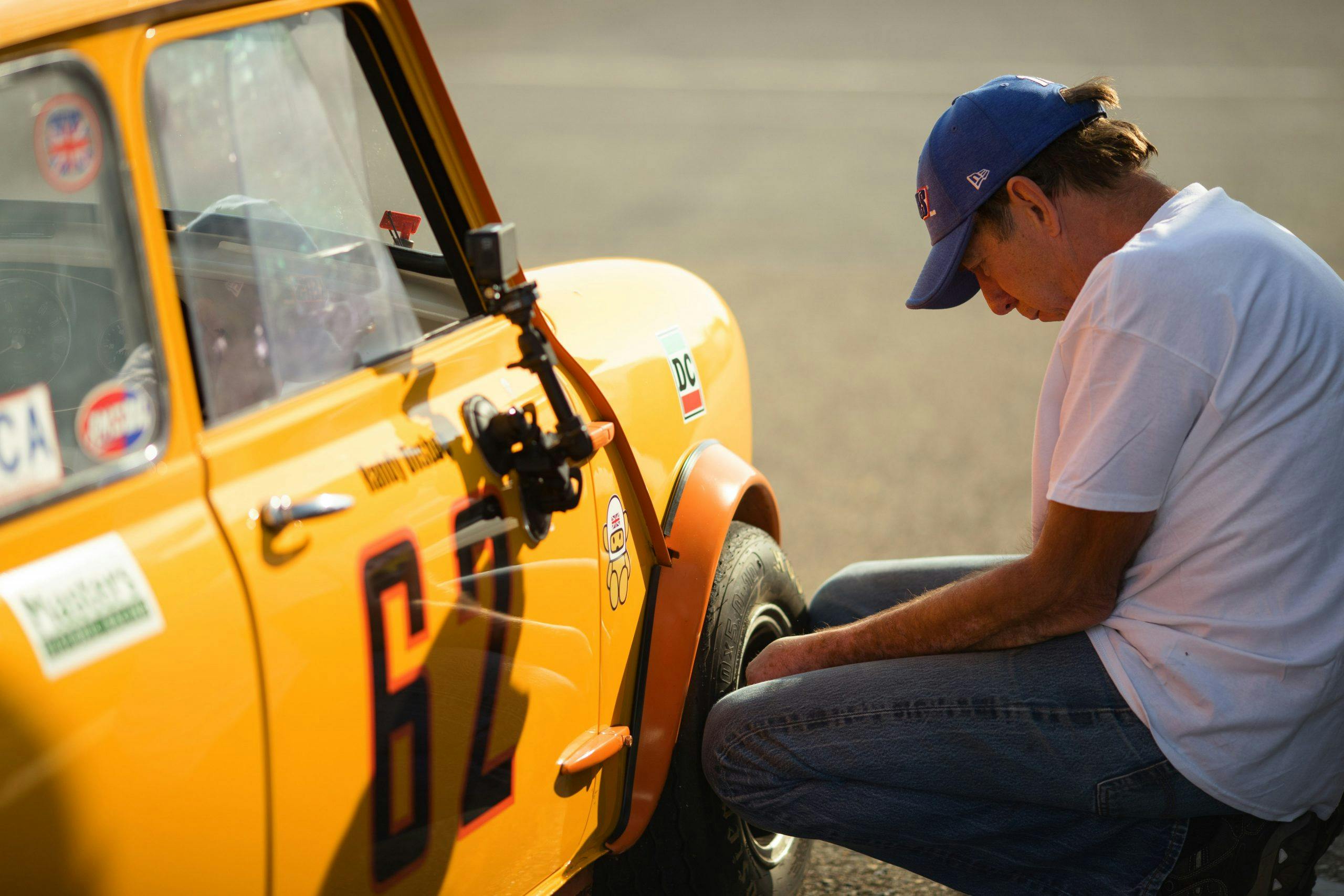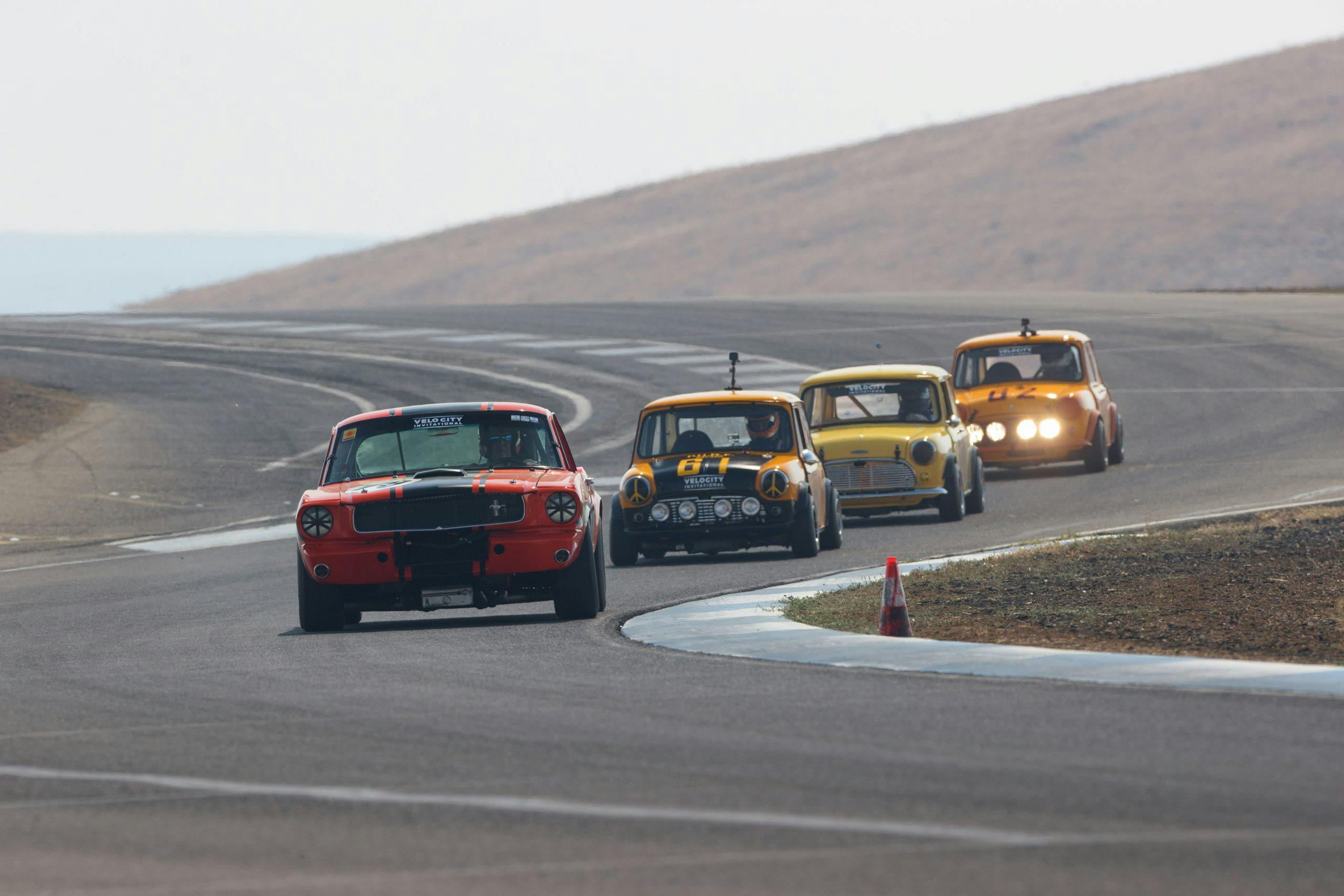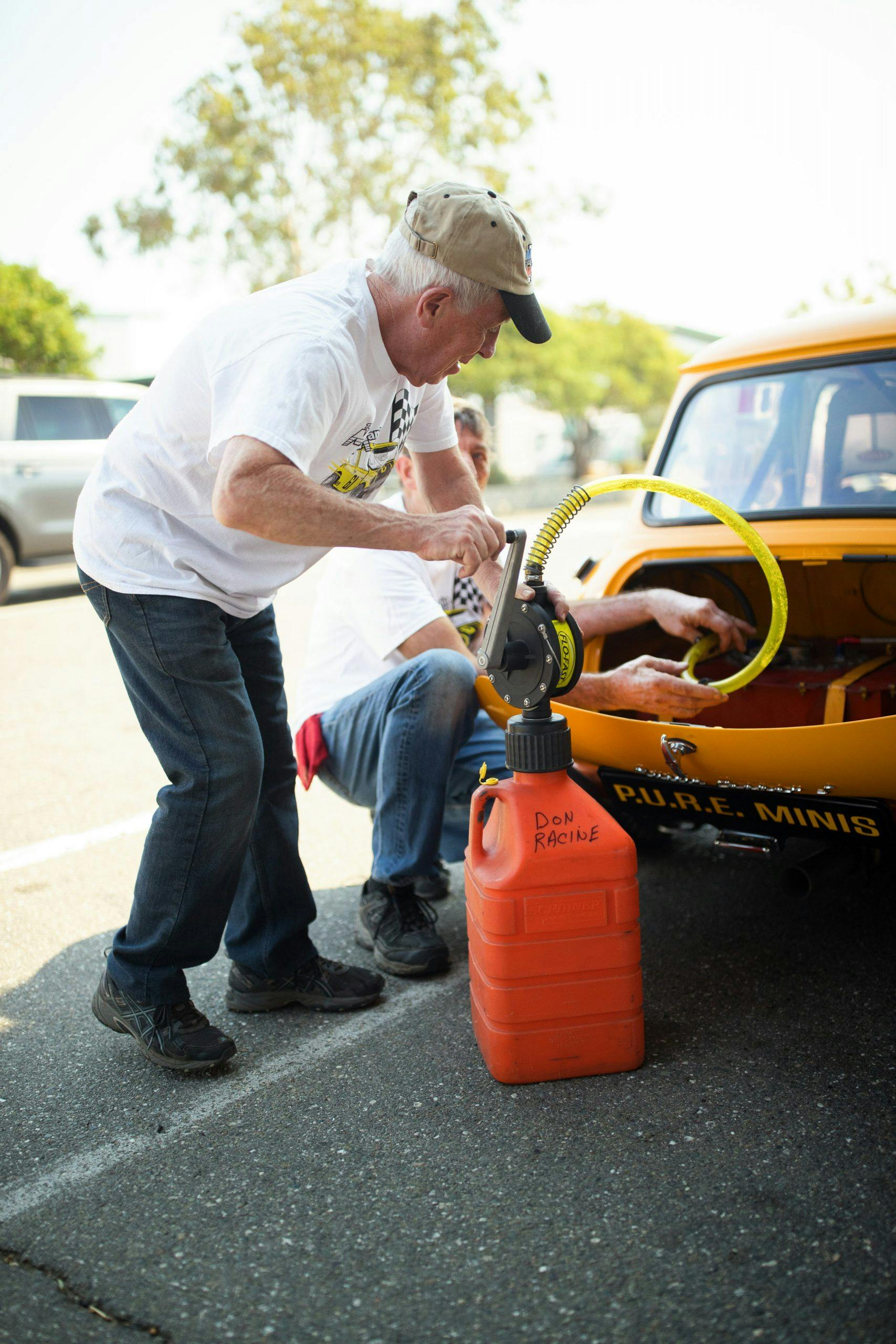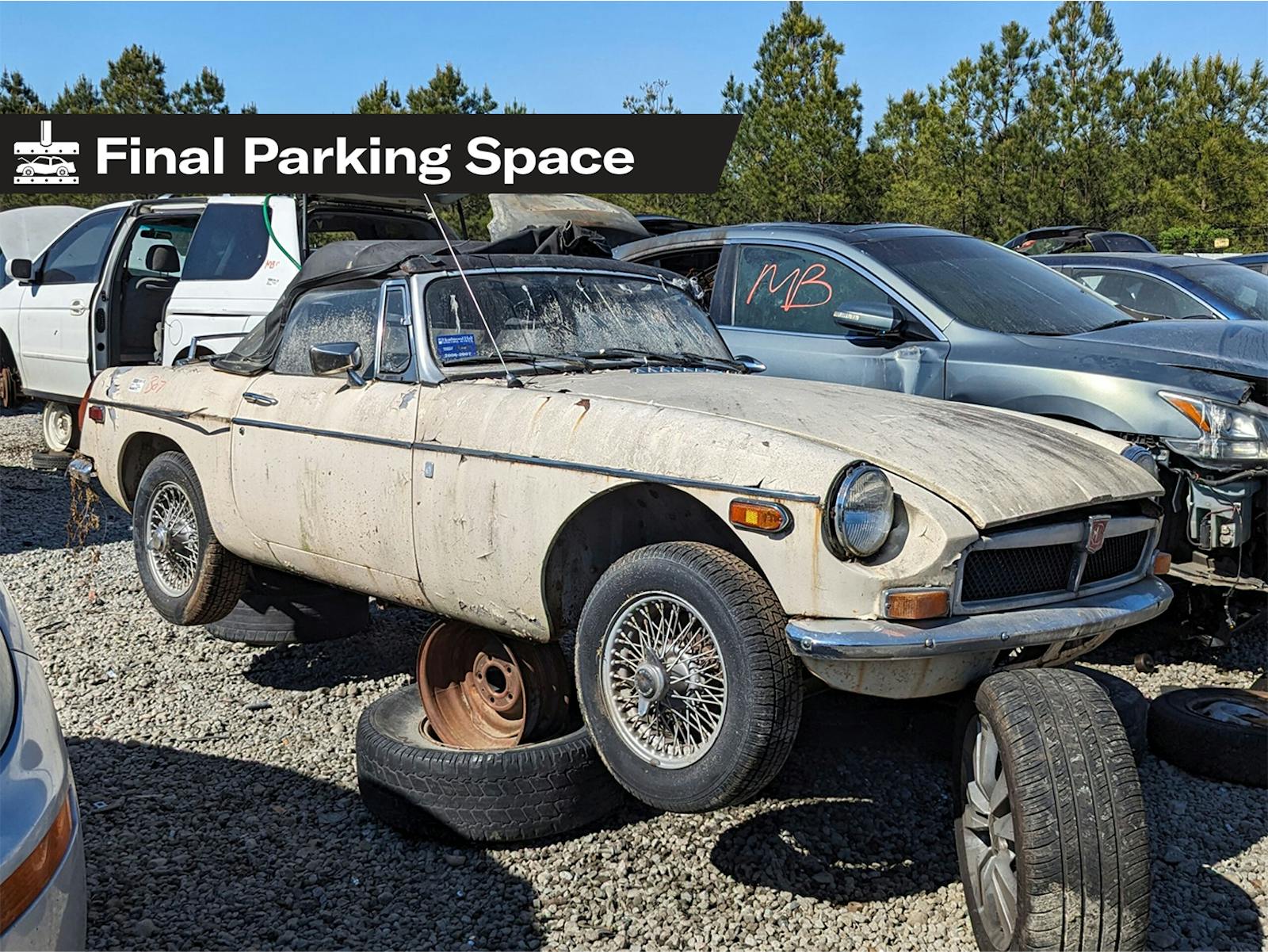Smithology: It’s just a spring clean for the May queen
2007.
A young man walks into a pub in Wales. It is raining. The kind of noncommittal rain that Britain often gets, when the North Atlantic can’t decide if the entire island needs to be drenched from toes to top or just sort of annoyingly damp.
“You should have a beer,” Chris Harris says, leaning against the bar.
The one and only Harris. In 2007, he was not yet an internationally famous car person, not a name through the megaphones of YouTube and Top Gear. He was merely a journalist attached to various English and American car magazines, one of which I had recently gone to work for, at the ripe old age of 26.
Does landing your dream job ever feel real? In my first interview, the executive editor used words like Fangio and apex and casually allowed as how the last Ford GT he tested had hydroplaned in a thunderstorm. As I rode the elevator out that afternoon, I resolved to never take anything for granted in this obviously spectacular business if it ever managed to squeeze me in.
“A beer,” Harris repeated, at the pub.
A drink appeared. I pulled an ignition key from my pocket and set it on a coaster. Renault Sport Clio 197, said the tag.

A Clio 197 weighs 2700 pounds and puts 194 hp through the front wheels. We had been driving that factory-owned press car and two other similar hatchbacks all day, skimming verdant ridges in a storm. The story pitch was mine, sold can-you-believe-it in an edit meeting months prior, stranger-in-a-strange-land meets three fast runt hatches too small for America. An eyeblink later, I was watching Harris punt a French-blue golf cart across scenery like a Zeppelin album cover.
I had seen those very roads on newsstands as a kid. Surreal is not even a start.
“Are they all this good?” I said, at the bar.
“The Clio?” Harris said.
“Yeah.”
“Most of the Renault Sport ones, yeah. I reckon the one before this was even better?”
“How is that possible?”
He shook his head. “Just mega on a B-road. Especially in the wet.”
Britain charts its pavement by letter and number—M1, A26, B42, on down the line. B-roads are catnip for chassis engineers, county-swallowing routes famously narrow and demanding, one of the reasons why great British cars feel like sorcery on trash pavement. The catch is that the diminutive scale that’s often king there doesn’t always port. That Clio was more than eight inches shorter than a contemporary VW Golf. Drop a machine that size in Omaha or Fresno, much is lost in translation. Minimalist and sharp in one spot becomes cramped and buzzy in another.

The pub’s door opened again. In walked my magazine’s road-test editor, a Michigan man named Marc. As we drank and talked, the two men got to rattling off B-road monsters. First great British Fords, then a few Renaults and Peugeots, the odd Porsche. The Mini came up, because how could it not? Harris told stories of the one he drove as a teenager and mentioned how it was almost a rite of passage for a British kid to bury one in a hedgerow after blowing a corner. Because he was Harris, the stories were funny and vulgar and took up half the room.
What’s a hedgerow? What Robert Plant sang of bustles in: bushes, dense enough to dent steel, lining England like green walls. B-roads in particular are known for them, often no curbs or shoulders, just shrubbery. I had made particular note of this for the past two days because Marc and Harris had fired along like the plant-walls weren’t even there, inches from leaves, as if there were extra points for catching brush in a door mirror.
I had only been to England once before, traveling by train in college. I had no idea if this was normal for U.K. driving, or just the stuff of lunatics.
At a break in the conversation, I pointed a finger.
“Wait.”
Both men looked over. At the same time, I was hit by the sudden realization of exactly how much Welsh ale had found my face in the last hour.
“Why,” I said, determined. “Uh. Are there, er, so many… um… on the road? In this country”—swig off the glass, prep for big finish—“…you know. The plants?”
Silence.
I elaborated. “You know?”
Details are fuzzy, but I feel like Harris sighed at this point.
“The B-roads,” I said. “Hedges. Everywhere.”
Marc, patient, took the bait. He said something about how Brit driving didn’t work anywhere else. All that matters is that both men seemed to be trying to not call me a doofus. The conversation moved on. We ate dinner. I remember chewing on ideas and questionably sourced pudding. In a quiet moment near the end of the meal, as I handed the Renault’s keys to Marc for the night, some beer-clogged neuron in my upstairs saw the trigger and clunked to life. A dim flashback montage blinked up behind my eyes, flickering like an old projector, scenes from the previous day. Mostly driver’s-eye views of the Clio threading some green-walled corner needle at max lat while the right pedal dug a hole in the carpet. It all looked supersonic.
You know, went a quiet voice in my head that sounded much like me but also sober, you were never going that fast.
Bull, I said to the voice.
What do you think the speedo read in those moments?
I admitted to not remembering.
Try, said the voice.
I gazed into my empty plate. Another supercut emerged through the fog—memories of random glances at speedometers on corner exit. Puny numbers: 23 miles per hour, 22, 26. Maybe twice as much in the faster bits.
A brief pause to put things together.
Ohhhhhhh, I said to the voice.
And then of course I felt very dumb and began thinking of sleep, the quicker to wake up sober and get back in the car.
Novelty comes so often when you’re young. Later that night, I collapsed into a bed in an old inn nearby. The floors creaked as the door latched shut, and I passed out without turning off the light. It was still on when I woke the next morning, the bulb’s warm glow stretched across the room.
2019.
I am folded into the right half of a dollhouse back seat, left arm stretched over the package shelf, my spinal cord twitching down the freeway. A five-foot-ten human of 180 pounds can definitely be installed in the rear of an old Mini, but the job requires a certain amount of dedication and patience and maybe a little pain, especially if you’re a lanky writer type with a cranky back who has tried yoga maybe twice in the last 20 years.
“You alright back there?”
Kim’s voice, from the front seat. My co-host. We were filming a TV show for NBC Sports, in the car, while driving.
“No?” I said.
“You want to trade places when we stop?”
“Eh, I kind of… like it?”
Laughter. “That is weird, Sam.”

We were on an Oregon highway, buzzing north toward the Columbia River. The man at the wheel was British, a young IndyCar driver trying to build a career in America. Portland’s IndyCar race was only a few days away, and a producer at NBC had arranged for Kim and me to interview the guy as we drove from a suburb to the Columbia River Gorge, about 15 miles away. The Mini had been borrowed from a local classic dealer and rigged with cameras. It was one of the late Rover models, a Nineties car with leather and fat front seats. Less elbow room, but more luxurious, if you squint.
The driver was affable, with stories of living an ocean away from home. When we reached the water, the Mini kicked off a short discussion of America’s dysfunctional relationship with small cars. In Europe, compact vehicles are mostly seen as practical; stateside, they’re just what you live with when you can’t afford anything bigger.
“Making do,” the driver said, acknowledging.
“Or settling,” I said, “until you can grow out or up, I guess.”
We all agreed this was silly.

The Mini began life as basic transport but evolved into so many other things—poor man’s sports car, runabout for wealthy folk, thrifty commuter, even a delivery van. More than five million were sold over 40 years of production, many in the home market, where the car fit best. In a famously class-obsessed place, a machine built for those without much money somehow ended up classless and fit for anyone. A deeply American ideal, really, all egalitarian merit, and yet, when Minis were sold here, they never took off.
The car bopped along the shore, clopping over expansion joints. The Gorge is lush and broad, basically a mountain range bisected by one of the west’s wildest rivers. I’ve been there many times, mostly to watch the place argue with itself over weather. It’s probably an optical illusion, but those cliffs always seem to help choke and stoke the water, the current’s flow hanging on how imposing the land appears at a given spot.
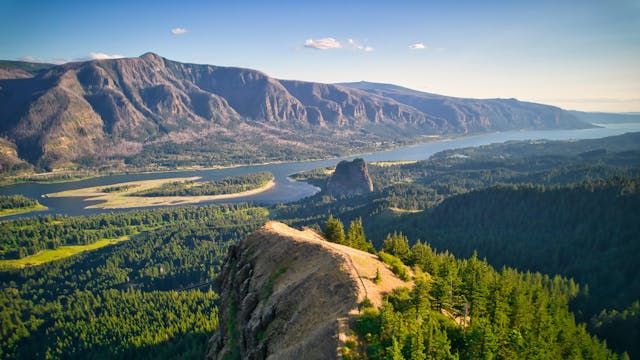
At the end of that shoot, while packing up, one of the crew wondered aloud about the height of those cliffs. Someone googled and came up with 4000 feet. It seemed too short.
So many of the early Mini brochures were built around drawings or paintings. You’d have these zingy colors and exclamation points, and some midcentury artist would tweak perspective to make the car look larger. A couple even pictured a cute little nuclear family by the thing, rain gutters at the father’s shoulders. In real life, that roof was less than four and a half feet tall.
2021.
September. The tail of the dry season, when Northern California is mostly tinder. I am at a track near Sacramento, testing old race cars with a few other journalists. The paddock holds more value than every house on my block combined—Le Mans Fords here, a 250 Ferrari there. There are also three early Minis, yellow Cooper S models, the attainable scamps of the group. They sit under an awning, parked, like cels from an old cartoon.
I walked up to one and knelt to look in. The dash held little more than that famous central speedometer, converted to work as a tach. The owner, a cheery guy named Don, had built two of the cars in period. Each wore a 1275 making maybe 100 horses per liter. Not much, until you remember that early Minis clock in around 1400 pounds, and even lighter in race trim.
So many old cars drive like they look. A track-prepped Mini looks like a lawn tractor with a sword in its teeth. Don invited me in and gave a few brief instructions, and then I was settled behind that wheel and tootling out of the paddock with my pants strapped to something that felt an awful lot like a rabid steel hat.
The track was so big in that thing, open to improv. What a loon! How many corners we snarfed up with helmet giggles! Everything hung on the front tires, how they pulled or scrubbed on entry and exit. There was full throttle, and then more full throttle, dabs of slide on a lift, have more throttle again. Are you thinking of too much steering angle? You are wrong; the nose will bog heavy, mania gone. Nobody does that twice. The right amount hits like espresso.
There was a good-size hill about halfway through the lap, a blind third-gear left where the windshield eats sky as you crest. First time through, I braked and tossed the car in bonzo, too slow but up on the curb and twitching. The second time around, I got the angles and braking right, compensating for entry slip from the nose. The car flung up the hill like a bullet and skittered down the back on a wave of gravity. The view out that screen closed up briefly, went tunnel-vision.
Hedges.
At the airport that night, waiting to fly home, I pulled out my phone to kill time at the gate. A browser window found the classifieds, and then the listings for a certain size and shape of car, and wouldn’t you know, at that point, I was talking at the screen, like my six-year-old daughter when she watches cartoons. I didn’t have the money for another car and wasn’t going to buy one anyway, didn’t even know what I was looking for, but window shopping seemed like the right answer, or maybe just a knee-jerk.
Nobody builds a front-drive car for road racing because it’s the best idea for a clean sheet. Rear-drive setups are generally faster and less compromised, but production racers use what they have. The Mini was a giant-killer for so long mostly because it did so much with so little.

There are very few great small cars left in America, and the ones left don’t really sell, even by the standards of 20 years ago. Analysts will tell you it’s because we’ve all grown obsessed with choosing more over less, that everyone demands all-wheel-drive and cargo space now, a high seat even though the rest of traffic is also sitting up high, or maybe because of it. I wonder from time to time if this is all simply because we’ve all grown too concerned with disposable dopamine Ws to draw lessons from anything else. We do so little with so much of the material stuff in our lives and then simply go buy more of it when the answers seem to run out.
When it came time to board, I put the phone back in my pocket. Memories fluttered up as the plane took off, hills shrinking beneath the wings. Out the window, in the dark, a city’s worth of lights twinkled in the distance. Small in one sense, but in another, ever so large and immensely bright.
